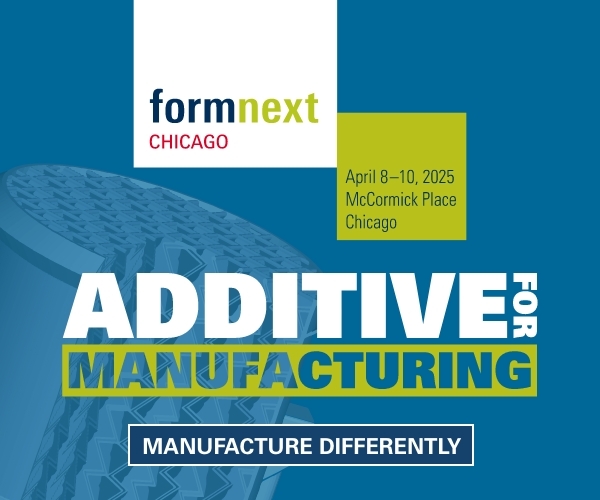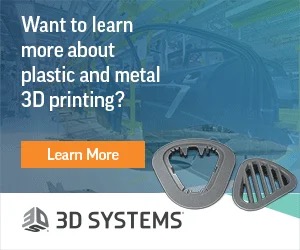 About a year and a half ago, scientists at Northwestern University made a major breakthrough. They developed a form of 3D printed hyperelastic bone that not only encourages bone regrowth within the body, but actually grows with it, which is especially crucial when placing implants in children. It will likely still be some time before we see this material actually being used in medical procedures on humans, but research is progressing well, and will continue to progress, especially now that it is being made commercially available to researchers.
About a year and a half ago, scientists at Northwestern University made a major breakthrough. They developed a form of 3D printed hyperelastic bone that not only encourages bone regrowth within the body, but actually grows with it, which is especially crucial when placing implants in children. It will likely still be some time before we see this material actually being used in medical procedures on humans, but research is progressing well, and will continue to progress, especially now that it is being made commercially available to researchers.
Dimension Inx was founded by Dr. Ramille Shah and Dr. Adam Jakus, the scientists who developed hyperelastic bone, to commercialize the material as well as others including graphene. The materials are sold in the form of “3D Paints” and include not only bone and graphene but metals, alloys, ceramics and more. Hyperelastic Bone 3D Paint is now available both from Dimension Inx and from bioprinter manufacturer Allevi (which prior to November 2017 operated as BioBots).
“Hyperelastic Bone offers several unique advantages over existing hard tissue biomaterials, 3D printed or not,” said Dr. Jakus. “For starters, it is made up of 90 wt.% hydroxyapatite, the same mineral found in teeth and bones. But, despite being mostly mineral, it remains flexible, making it very user friendly. Its user friendliness combined with its bioactivity make Hyperelastic Bone an excellent hard tissue biomaterial.”
Using Hyperelastic Bone, doctors could eventually repair even severely damaged bone by 3D printing an implant in the exact size and shape of the patient’s bone void. Once implanted, that structure would facilitate the growth of natural bone tissue, ultimately resulting in a fully repaired, regenerated bone. This method would be a major improvement over traditional methods that don’t allow for customization or regeneration.
Hyperelastic Bone 3D Paint prints at room temperature and can be handled immediately after printing. It can also be seeded with cells post-print. It can be cut, rolled, punched, folded, and more. It’s easy to work with, as is the Allevi, which was designed to be extremely user-friendly and simple, requiring no special knowledge.
“We have tirelessly worked to provide an experience that is repeatable and achievable by scientists with no 3D bioprinting experience,” said Taciana Pereira, Bioengineer and Tissue Kit Specialist at Allevi.
The Hyperelastic Bone Kit starts at $250 and comes with 3ml Hyperelastic Bone 3D Paint, a 5ml syringe, a metal drawing needle, a printing needle, and a printing dish. It is available here.
 The Allevi 1 is small and affordable for a bioprinter, priced at $4,995. It can print with a wide variety of materials, including cells, collagen, matrigel, alginate, gelatin methacrylate, PCL, PLGA, and others. Allevi calls it the easiest to use bioprinter on the market.
The Allevi 1 is small and affordable for a bioprinter, priced at $4,995. It can print with a wide variety of materials, including cells, collagen, matrigel, alginate, gelatin methacrylate, PCL, PLGA, and others. Allevi calls it the easiest to use bioprinter on the market.
The company also offers the multi-extruder Allevi 2 and Allevi 6.
“For years bioprinters have remained exciting, but questions have remained as to how are they useful?” said Ricky Solorzano, CEO of Allevi. “Hyperelastic Bone by Dimension Inx and its promise is a clear example of how advanced biomaterial printing can have a huge impact on humanity for generations to come.”
Discuss this and other 3D printing topics at 3DPrintBoard.com or share your thoughts below.
[Images: Allevi]
Subscribe to Our Email Newsletter
Stay up-to-date on all the latest news from the 3D printing industry and receive information and offers from third party vendors.
You May Also Like
NSF Awards Kentucky $1M for Advanced Manufacturing
The National Science Foundation has awarded a $1 million grant to the University of Louisville for the Advancing Manufacturing and Building Construction Technologies (NSF AMT) project. This initiative is part...
3D Printing News Briefs, May 11, 2024: 3D Printed Stent, Tower, Sculptures, & More
We’re starting off with medical research in today’s 3D Printing News Briefs, as researchers in Korea used CT images and 3D printing to fabricate an educational simulator for a mastoidectomy....
3D Printing Unpeeled: Wind Turbines, Probiotics and Lenses
TPI Composites, ORNL and Ingersoll Rand are working to make wind turbine tooling segments that can be 18.3 meters long. These elements also include resistive wires that help keep the...
Tethon 3D Releases Cost-effective Bioprinter
Tethon 3D, known for its ceramic-loaded DLP materials, custom resins, and DLP 3D printers, has recently released a bioprinter. Vat polymerization printers like DLP systems have been widely used by...

































